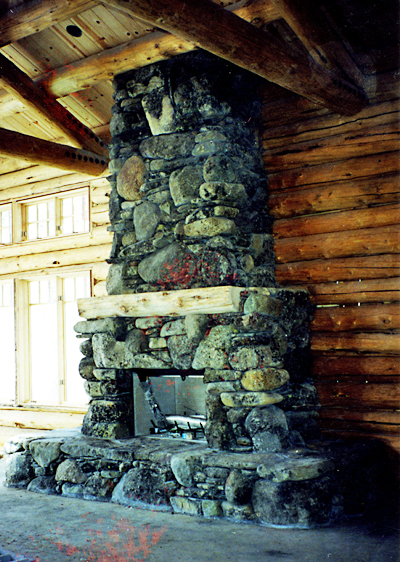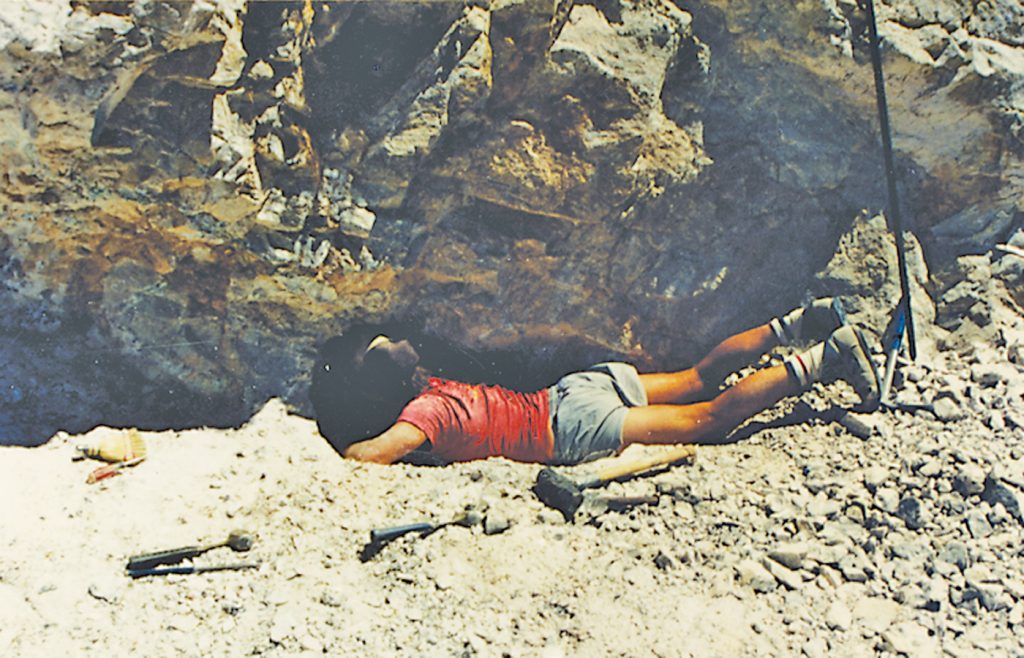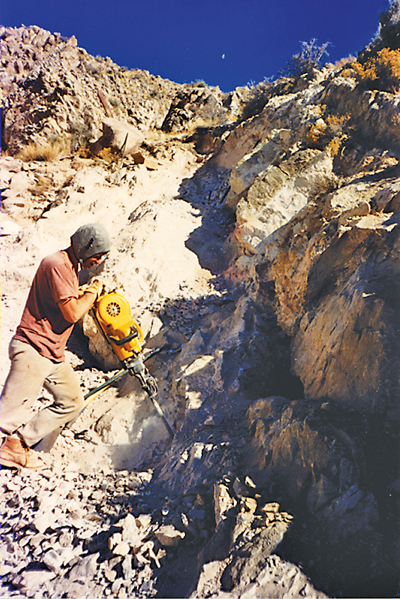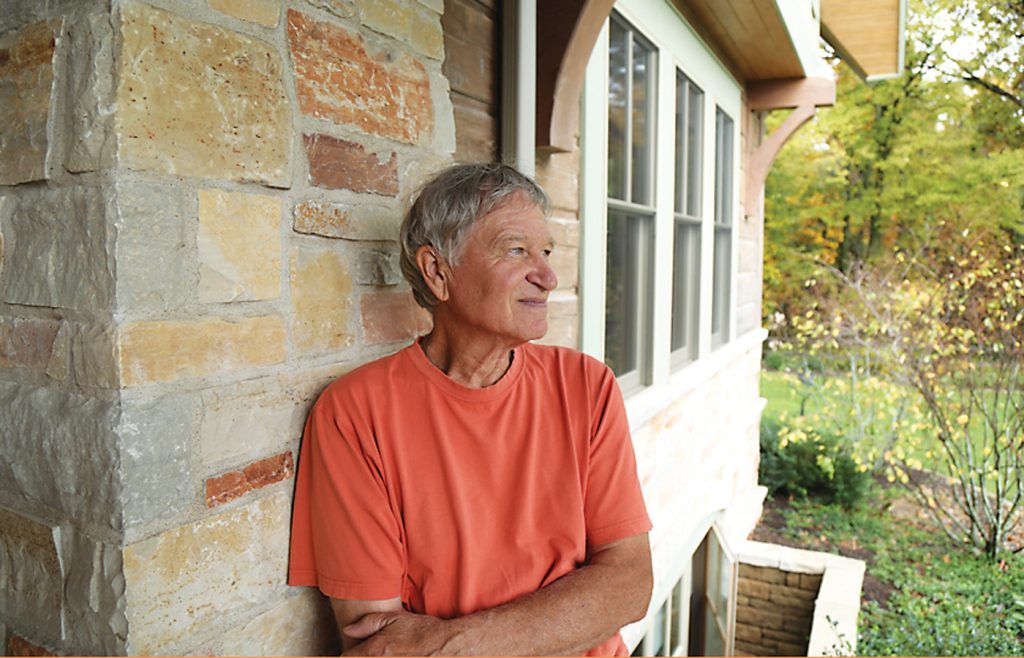
If you know Dennis Kossow, you’ll agree he’s a top contender for the “The Nicest Guy You’ve EVER Met” award. His high school teachers, however, did not think as highly of him.
“Oh, I was terrible. Just the worst,” he told me over donuts. I’m shocked and amazed at this news from my mother’s favorite neighbor. “In fact, I had a bet with a buddy to see who could graduate with the lowest grade point average in the class.”
But to know the adult iteration of Dennis Kossow is to love him—and once you’ve seen what he can do with a pile of rocks, you’d forgive him almost anything.
Like so many of us, Dennis came by his passion, stonemasonry, almost by accident.
“When you’re young, you’re drawn to certain things, and I was drawn to drawing,” he told me. I’m picturing him ignoring his algebra teacher, his nose buried in a sketchbook. “Instead of thinking things, I was drawing things.”
Dennis always gravitated toward creating things with his hands, but he didn’t discover masonry until a few years later in a small town in the Northern California foothills. “I was visiting a young lady,” Dennis recalled, “and her grandfather was doing a rock wall.” He paused. “I watched him . . . and it was reeeeally interesting.” The seed was planted.
“I Never Met a Rock I Didn’t Like”
In his twenties, Dennis worked construction for Bob Bernards—a contractor in Lake Tahoe at the time, now co-owner of the Depot Brewery in Fairfield. “I was working with him framing houses,” Dennis said, “and one of the houses we did, we couldn’t get a hold of a mason.” We all know what comes next.

“I volunteered to do a fireplace. I knew nothing about it,” he chuckled. But with the help of a couple masonry books he’d found to guide him, Dennis forged ahead. “It was really fun. . . . I built a form and did the arch and was totally amazed that it stood up when I pulled the form out. And that was the start. . . . I loved it. I just absolutely loved it. And I never went back to framing houses.
“The thing that I loved, as much as stacking it,” he said, “was picking out the stone. I used to have a place up in the mountains—it was a great big rock bar, probably 500 feet long. The Yuba River, “a beauuuuutiful river,” Dennis recalled, “would deposit a lot of river rock on that big bar. So I’d hop in my old pickup, and I’d take a sleeping bag, a watermelon, a gold pan, and my fly rod, and just spend the day picking out rock . . . fishing . . . I could find a little bit of gold there, and swim and eat watermelon. It was the perfect life!”
Lucky for us, Dennis decided to relocate to Iowa in 1986, and now lives on the far north edge of Fairfield with his wife, Kiki, amongst piles and piles of bright perennial flowers, two white pickup trucks, and a side yard full of asparagus . . . and stones, of course.
Stonemasonry 101
To be a good stonemason, whaddya gotta know? “The first thing that I had to learn,” Dennis said, “was the structural aspect of it. What you had to do to prepare for laying the stone. The footing and all that.” Dennis credits his good friend Ken Hoffman for teaching him the nuts and bolts. But his favorite part of the preparation process is the hunt for rocks.

“It’s so much fun picking out the stone and figuring out how it’s gonna stack. It’s like your gardening,” said Dennis, who is well acquainted with my flower addiction. “You’re looking for color, shapes—big shapes, small shapes—and you’re looking for textures.

“I remember the moment I realized about textures. I was doing a floor . . . and I had a type of granite that had a texture to it, it wasn’t polished. And then I had a granite that was honed—the texture is more matted. . . . And the sun came in through a window and went across the floor, and I went ‘whoa!’ The textures of some, and the smoothness of the others . . . I really got into it. Light playing off of stone is really fascinating to me.”
Okay, so that covers some of the practical aspects, the initial approach. And “of course,” he said, “it depends on the house, and it depends on the client. A lot. Some people want a little more color, some people like a background color.” Dennis has had some pretty tall orders over the years, but the way he talks about it, he’s like a kid on Christmas when he gets to jump in his pickup truck and drive across several states to find the right rock for the right project. “They should have whatever they want,” he said warmly.
The Rock Whisperer
Hunting skills aside, Dennis’s true brilliance as a stonemason comes from a place of intuition. And listening.
“I’ve found out over the years . . . if you try to force a stone into a place, it doesn’t work. Or if you try to manipulate something, it takes away the flow. So you kinda have to—this was a hard one for me—you kinda have to let go a little bit, and let the process happen.”
Dennis could just as easily be describing best practices for The Fine Art of Avoiding a Miserable Life. A little surrender goes a long way sometimes.

“When I’m laying stone sometimes, a stone will kind of—” (he makes a humorous nudging gesture with his elbow)—“ ‘Hey, what are you doin’? I wanna go
there.’ And I won’t listen, and I’ll put it [in], and at the end of the day I’ll look at it and go, ‘Ohhhhh, what’d I put that stone there for?’ And I’ll tear it down. So I have to get out of the way sometimes. . . . You have a little bit of your individuality there, but there’s something else going on.
“The way I see it is that I love working with it, so that’s the communication there . . . I can pick up a stone, and I move it around, and I love lookin’ at it—tryin’ to figure out what it wants to do.” So, if Michelangelo had been a mason.
Even though they are very much alive to him, Dennis has noticed “there’s a lot of silence in the stone . . . and when I’m putting stone up, I notice . . . it brings a little bit of silence to the house. Something solid.” Think about it. “All the old monasteries are built out of stone. The cathedrals, stone. Usually a lot of places of worship, they were made out of stone, no matter what religion it was, and maybe there’s something with that.”
Most of Dennis’s inspiration—and his integration of balance, and flow, and color, and light, and order, and even chaos—comes from nature. From studying rock outcrops in the mountains and around the Midwest to observing the cross section of a flower that has a complex, seemingly random system of vascular bundles, “I get a lot of my ideas from nature—always looking for ideas, cuz there’s a lot there. If you just catch it!”
A Blessed Life
“This occupation . . . has been really good to me,” Dennis reflected, taking the final sips of his tea. “I’ve been able to travel and do projects all over the West, and I got to go to China and build a rock garden, and I got to work on a monastery in Germany. . . . I’ve been real fortunate. It’s been a really good run. If I were to start all over again, I’d do the same thing.” He added, “And none of this could have happened without the vision of my customers and the hard work and creativity of my crew.” And the rocks, of course. “You gotta thank the rocks.”
Something else Dennis thinks about a lot are the “unseen” talents that go into a typical project he’s involved in. “The trades have all these incredible people that do things—that you never see. The person that puts the foundation in. You don’t see that. The person who frames the walls. You don’t see the framing, you see the sheetrock. The people who do the plumbing and electrical. You don’t see all that. And I come in at the end of a project, and if it weren’t for these other people doing all these amazing things—beautiful work—I wouldn’t be able to do what I do. And I think theirs is more important than what I do, but I get a lot of credit because it’s what you see. I tease the other guys about it . . . but I’ve always felt a little bad about that.”
On Magic . . . and Masters
There’s nothing better than being in your groove, living your dharma. “Sometimes I work and I don’t know that the day has gone by,” Dennis sighed. “And other days I wish the day was over.” He let out a big, hearty laugh. “Those days when the magic isn’t workin’, ya know, best thing to do is just put your tools down and maybe go take a hike, go dig geodes or something.”
So when Dennis isn’t playing with rocks, he wanders off somewhere to go play with rocks. Clearly the man is where he was meant to be.
In fact, he took a little break from our interview to go get some crystals he’d recently acquired for his collection. There was a smooth, clear shard of purple amethyst, a brilliant turquoise-blue chrysocolla, and a bright white and peachy-pink crystal pocket that looked like someone had stuck a piece of bubble gum inside a geode. I could tell by the grin on his face, this stuff really is like candy to him.
You might come upon Dennis selling or trading his crystal finds at regional rock and gem shows. But if you’re really lucky, one day, you’ll find him working in your yard, on your patio, or in your living room.
As amazing as he is at his craft, Dennis Kossow remains humble about it. In fact, he got pretty wiggly in his seat when I referred to him as a “master” stonemason, as I’ve so oft heard him called around town.
“You know what,” he deflected, “if you think of a master stonemason, you think of . . . maybe Stonehenge, or maybe the Aztecs or the Incas, Machu Picchu—there’s no space between those rocks! I mean, how’d they do that? And maybe the Pyramids.”
“I just call myself a stonemason,” he said. “And I’m very happy with that.”
Okay, so if we insist on calling him a master, we’ll just say that part under our breath. A silent fixture in his title. Like an understated stone that sparkles a little in the light, but balances out its brothers as it shares the weight of a beautiful work of art.
